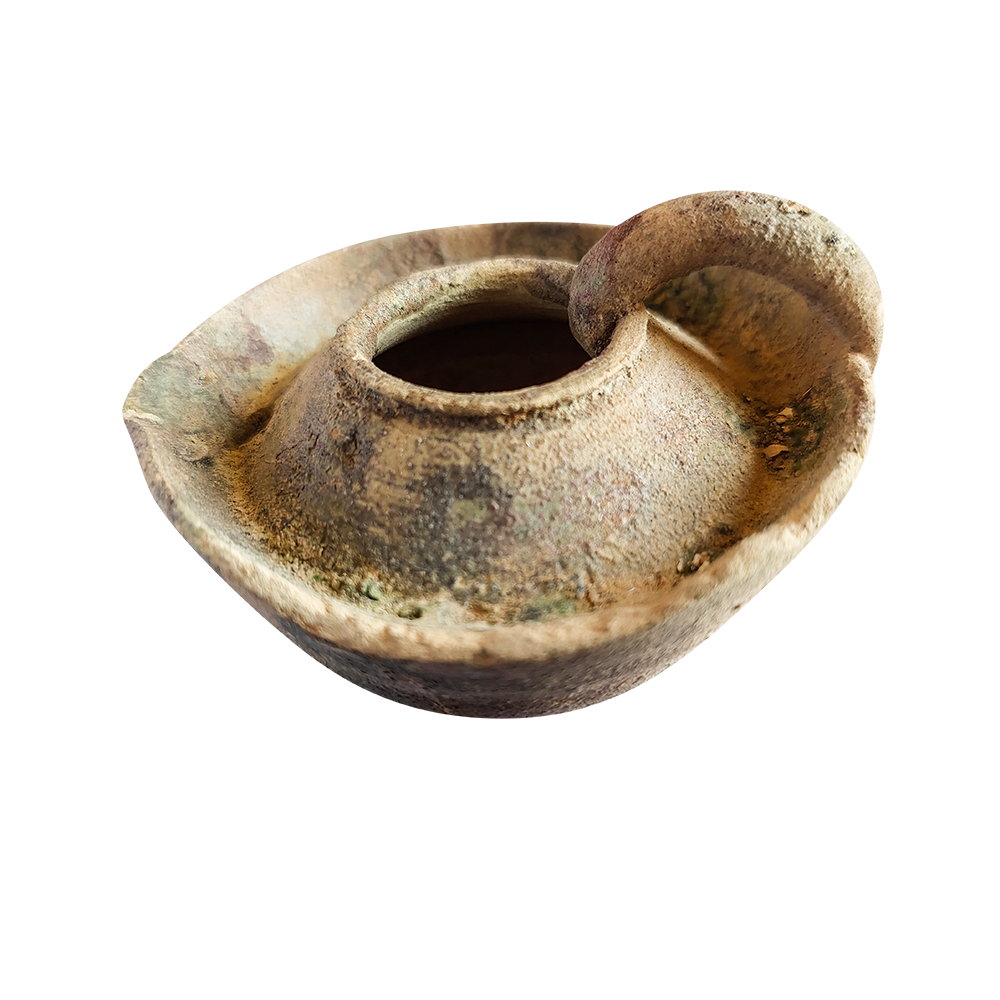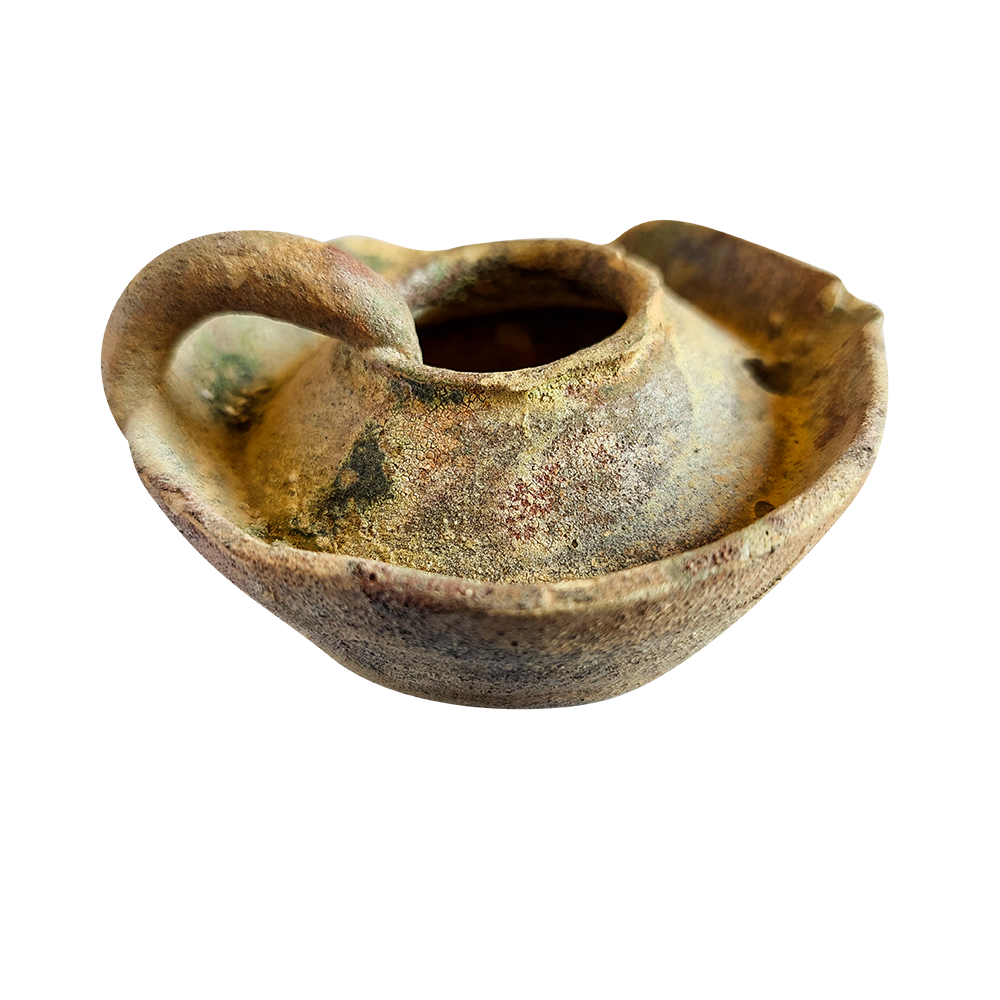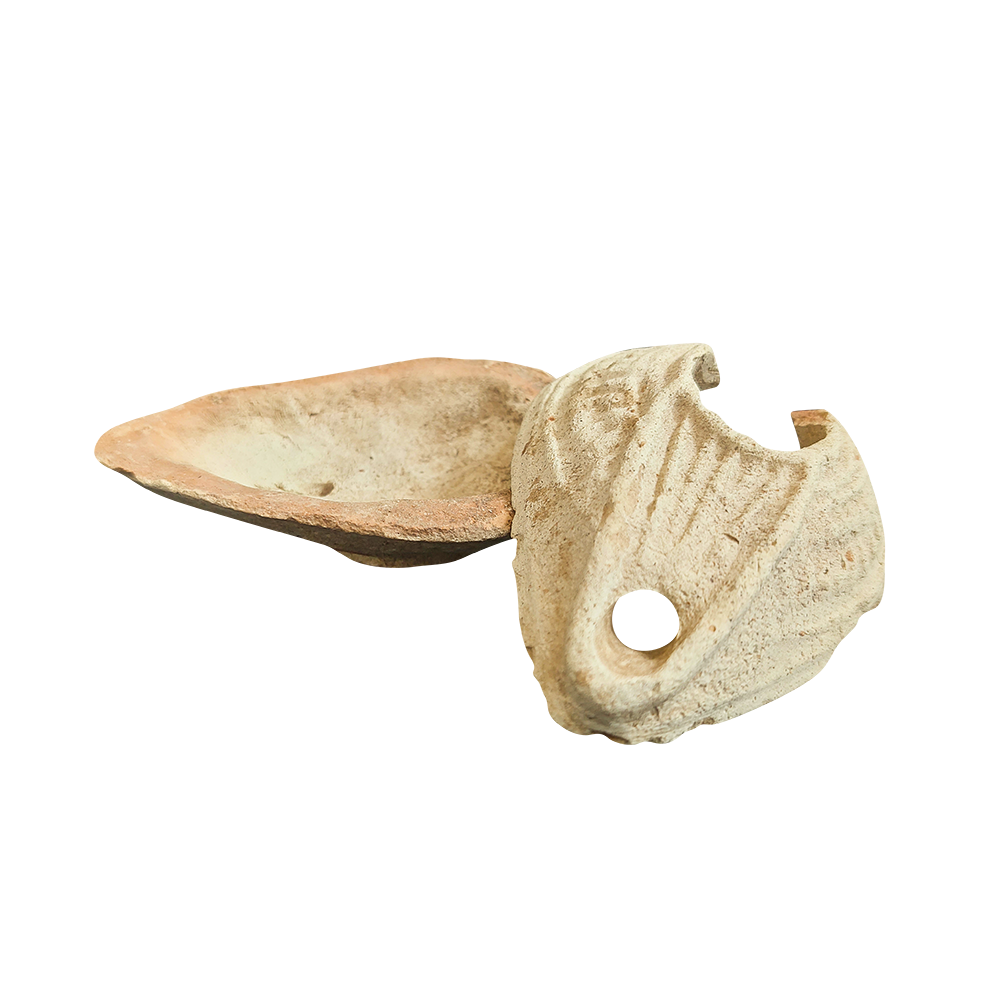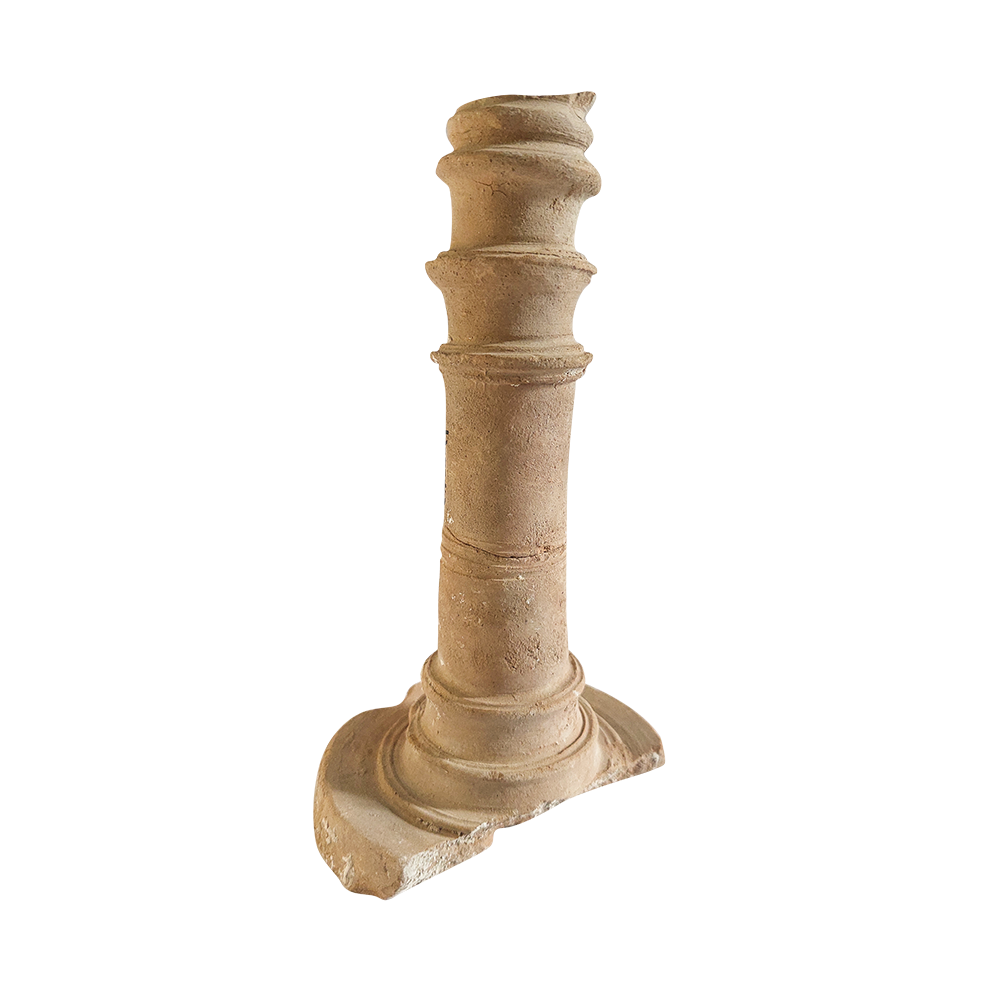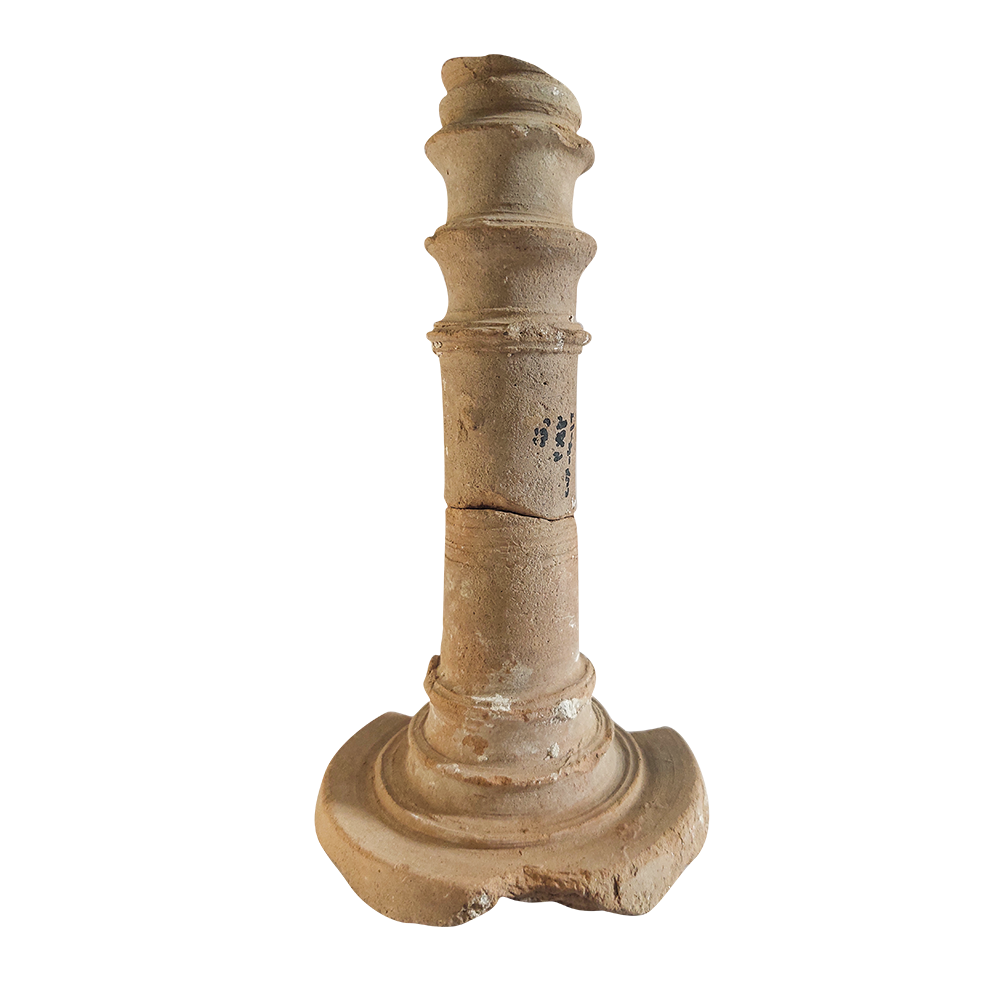
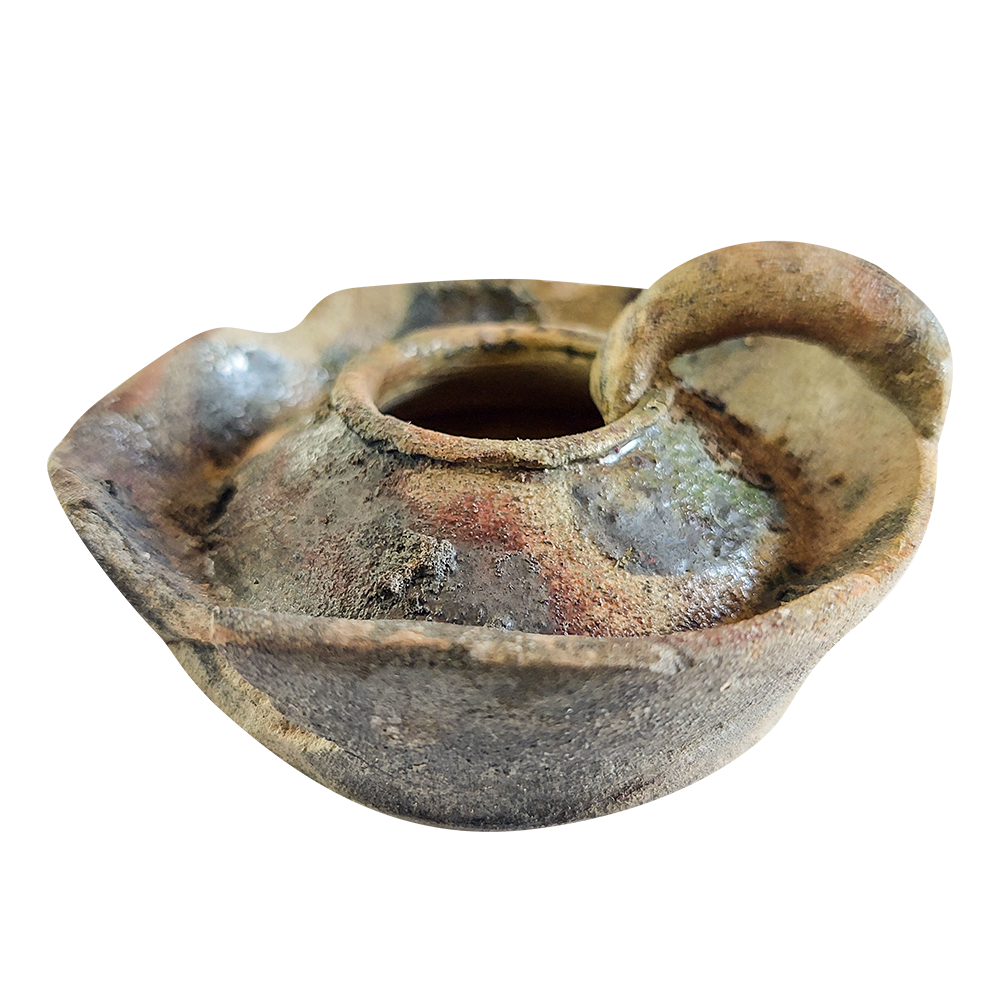
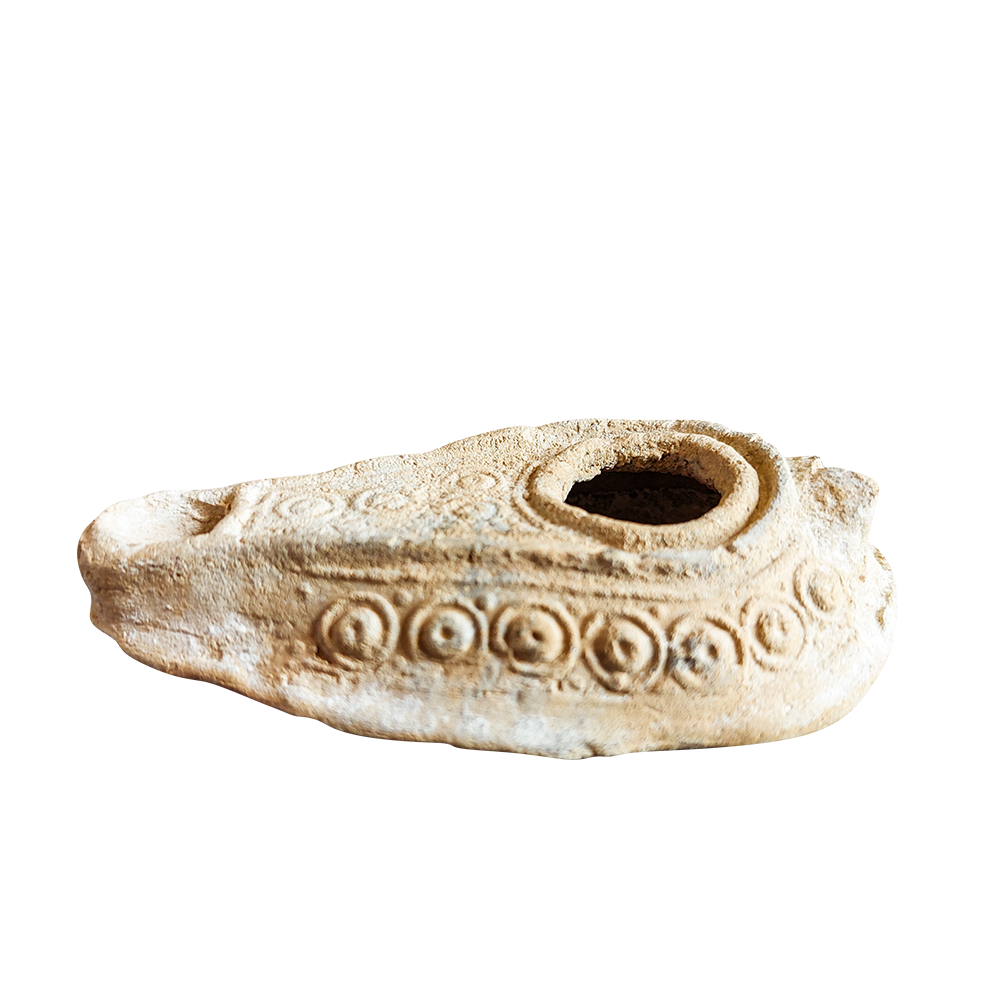
Out of the Dark: Lighting
About the exhibition
Before the invention of electricity, people had to light their homes with other devices.
Most common were oil-lamps in various shapes that changed with times, tastes and fashion. But they all function with the same basic design: a small chamber containing the fuel - commonly oil, fat or tallow - with two openings. The larger of which is used to fill the chamber with oil, while the smaller holds the wick made of cotton, cloth or thread. They are all built with handles or small knobs to carry.
The lamps were produced in 2 moulds, into which the clay was pressed (like No. 93 or No. 21) - a quick and easy way of production, including a decoration. These could be anything from simple geometric designs to inscriptions and religious symbols.
Only later lamps were thrown on a potter’s wheel to achieve that rounded shape as seen in No. 29 and No. 55. An additional glaze made them even more durable (No. 69). Every household needed a large number of such lamps and it is not surprising that in archaeological excavations masses of oil-lamps have been found.
Candlesticks like No. 411 were less common because of the considerable cost involved in sourcing wax from bees or other insects. More affordable candles could be produced from alternative materials like tallow. However, they would have been much lower quality and extremely smelly!
Unfortunately, in Raqqa, there are no remains of the grand glass lamps that hung in the mosque. These lamps were suspended from the ceiling by long chains, filled with water and oil, and illuminated by floating wicks. However, excavations at the Great Mosque have revealed traces of another type of lavish lamp: the polycandelon. This was composed of small glass vessels resembling footless wine glasses which were set into a bronze frame capable of holding between seven and sixteen lamps. In the Mosque, dozens of theses glasses were found (on the photo they are upside down!), but no frames were discovered.
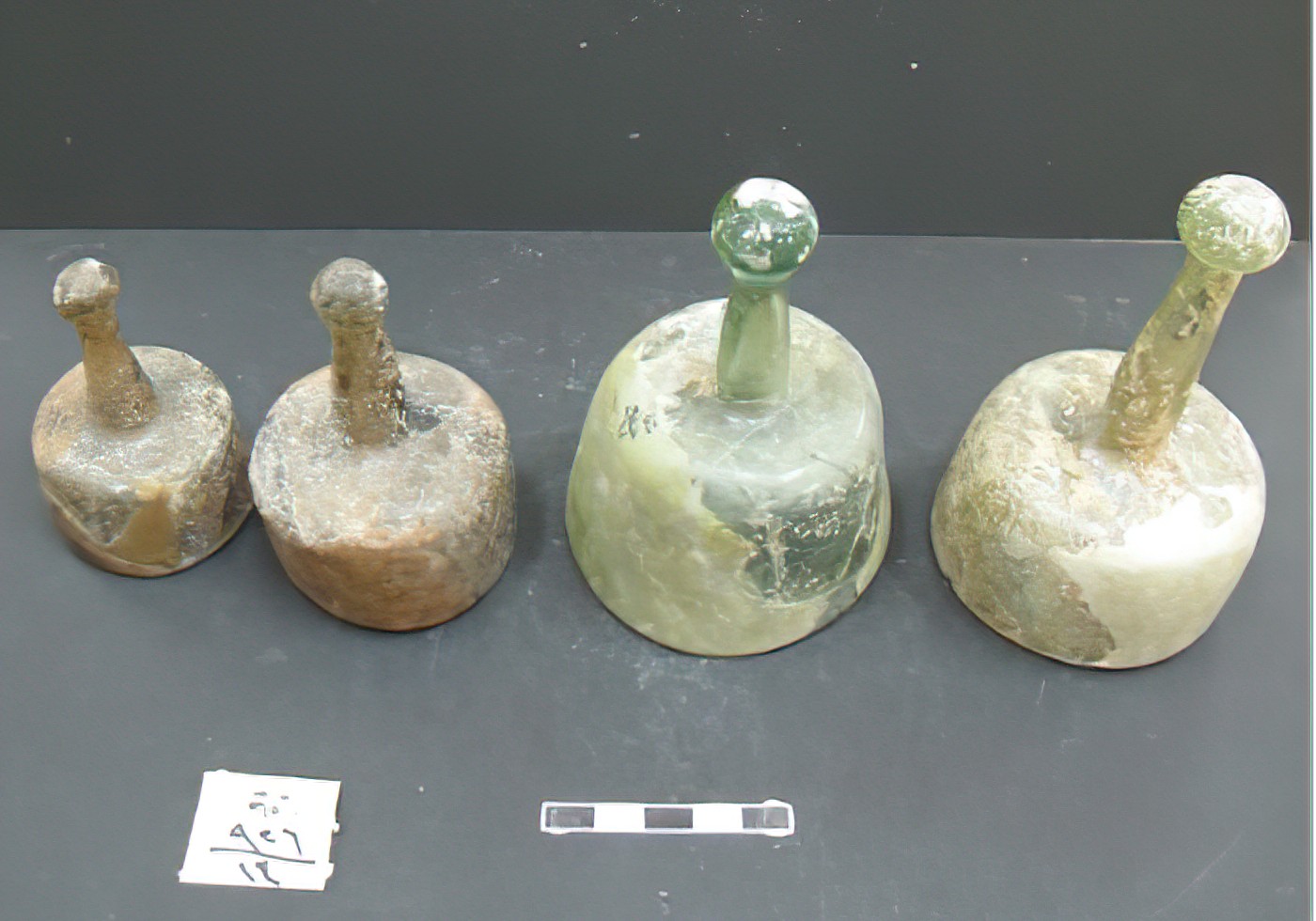
Oil-lamps from early Islamic times, 9th-11th century: bowl-shaped lamps with short handles. Glazed.
Oval, mould-shaped oil-lamps
